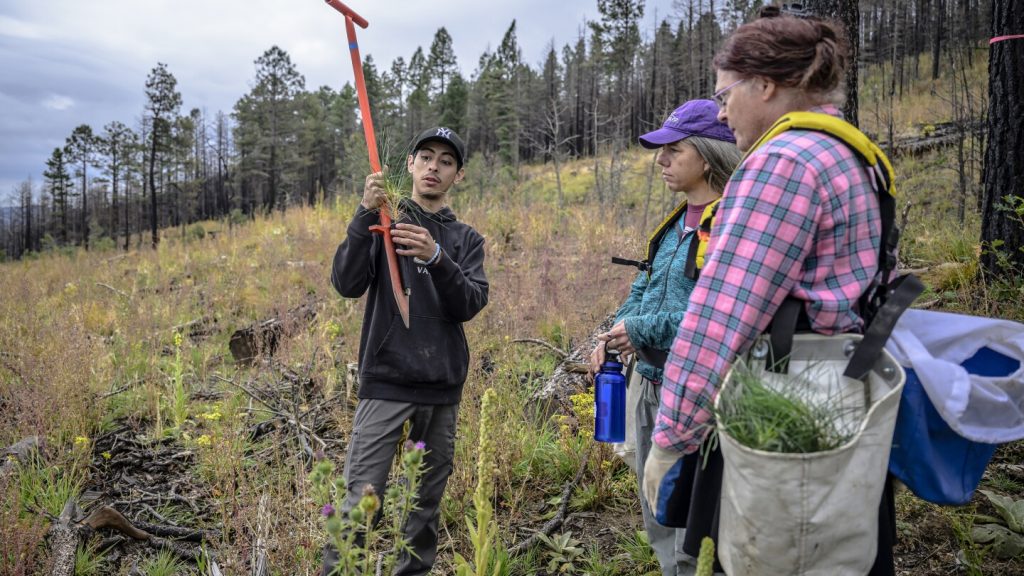A group of volunteers dedicated a few hours to plant hundreds of seedlings on fire-damaged mountainsides in New Mexico as part of the ongoing recovery effort following the state’s largest wildfire. The blaze, known as the Hermit’s Peak/Calf Canyon fire, was ignited in 2022 by prescribed burns that went awry. This led to massive devastation, leaving large areas in northern New Mexico in ruins. Despite the challenges, the volunteers were able to plant nearly 400 ponderosa pine seedlings in areas identified as high priorities by the U.S. Forest Service.
These planted seedlings are expected to help regenerate more trees and create islands of trees that can produce their own seeds over time. The Nature Conservancy, along with the Hermit’s Peak Watershed Alliance, partnered on the project and used donations to purchase a total of 5,000 seedlings, with New Mexico Highlands University contributing an additional 3,500 seedlings. Researchers at New Mexico State University’s Forestry Research Center are experimenting with drought-hardening some of the seedlings to prepare them for warmer and drier conditions they may face when taking root in burn scars.
The goal is to plant the seedlings before the first freeze, and volunteers and researchers are working tirelessly to ensure the success of the reforestation efforts. The Hermit’s Peak Watershed Alliance team plans to continue planting daily through early October, with additional weekend sessions for interested volunteers. Efforts like these are crucial as wildfires continue to devastate large areas across the U.S. This year alone, over 11,460 square miles have been scorched, surpassing the 10-year average. The National Interagency Fire Center has noted delays in reporting actual acreage burned due to the high tempo and scale of fire activity in recent months.
In northern New Mexico, reseeding efforts began soon after the fire in 2022, with crews working to mitigate erosion and flood damage within the burn scar that spanned over 534 square miles across three counties. Federal agencies have seeded tens of thousands of acres and built flood control structures to combat the aftermath of the fire. Despite challenges, some areas are showing signs of recovery, with new ground cover and aspens beginning to grow back. However, there are still patches of severely burned ground that will require more time and funding to address. Overall, the dedication of volunteers and researchers in reforestation efforts is essential to restoring the landscape after devastating wildfires.


